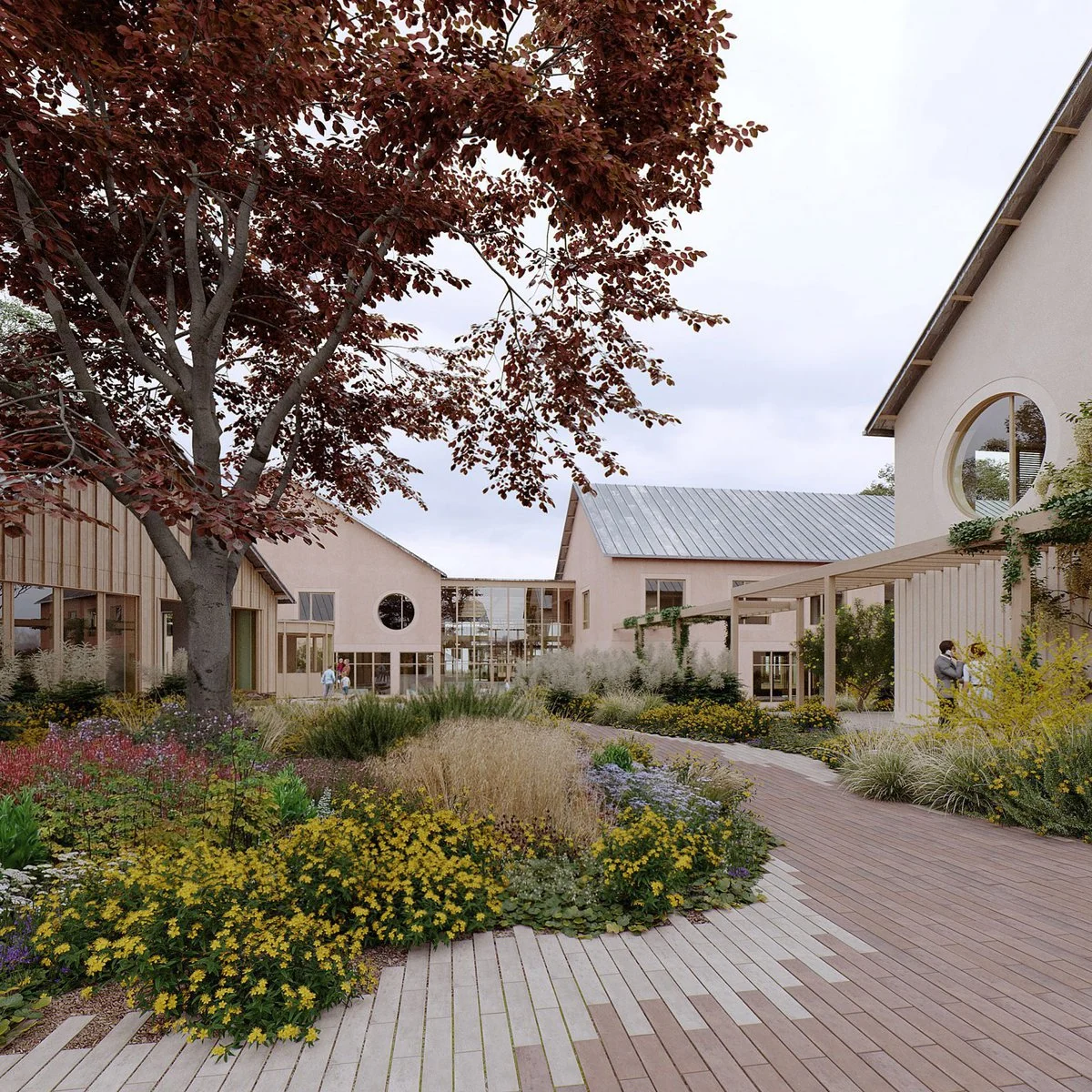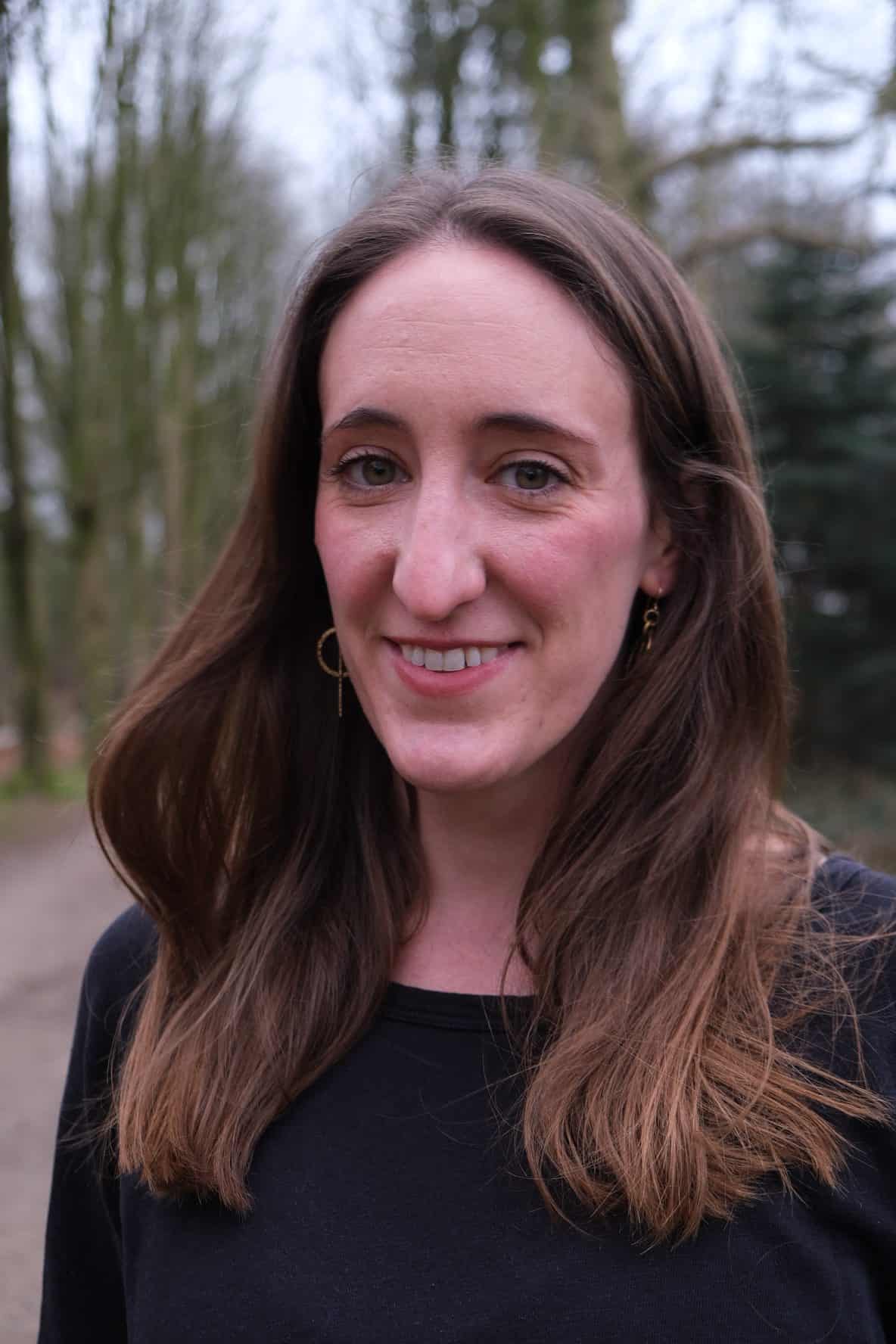

A Patient Is a Person is a series about how whole-person health is transforming the patient journey. It is supported by funding from UPIC Health.
A large mural of a teacup decorated with a green flower bursts off the white wall on the ground floor of a tall apartment building in the Kebun Baru area of Singapore. A bowl with a rooster adorns another building nearby. Up the street, another tower features a candy with a white rabbit on the wrapper.
The paintings are more than street art. These 10 murals — each depicting a distinctive Singaporean food-related item — are helping residents with dementia find their way home.
More than 80 percent of Singapore residents over the age of 65 live in public housing blocks like these. But, as the social service agency Dementia Singapore heard from locals in Kebun Baru, the uniform, whitewashed design of the ground floors made it difficult for residents with dementia to get around. Dementia — a family of conditions that impact cognitive function, including Alzheimer’s disease — changes how people are able to navigate even familiar areas, and can impair their ability to read information like numbers.
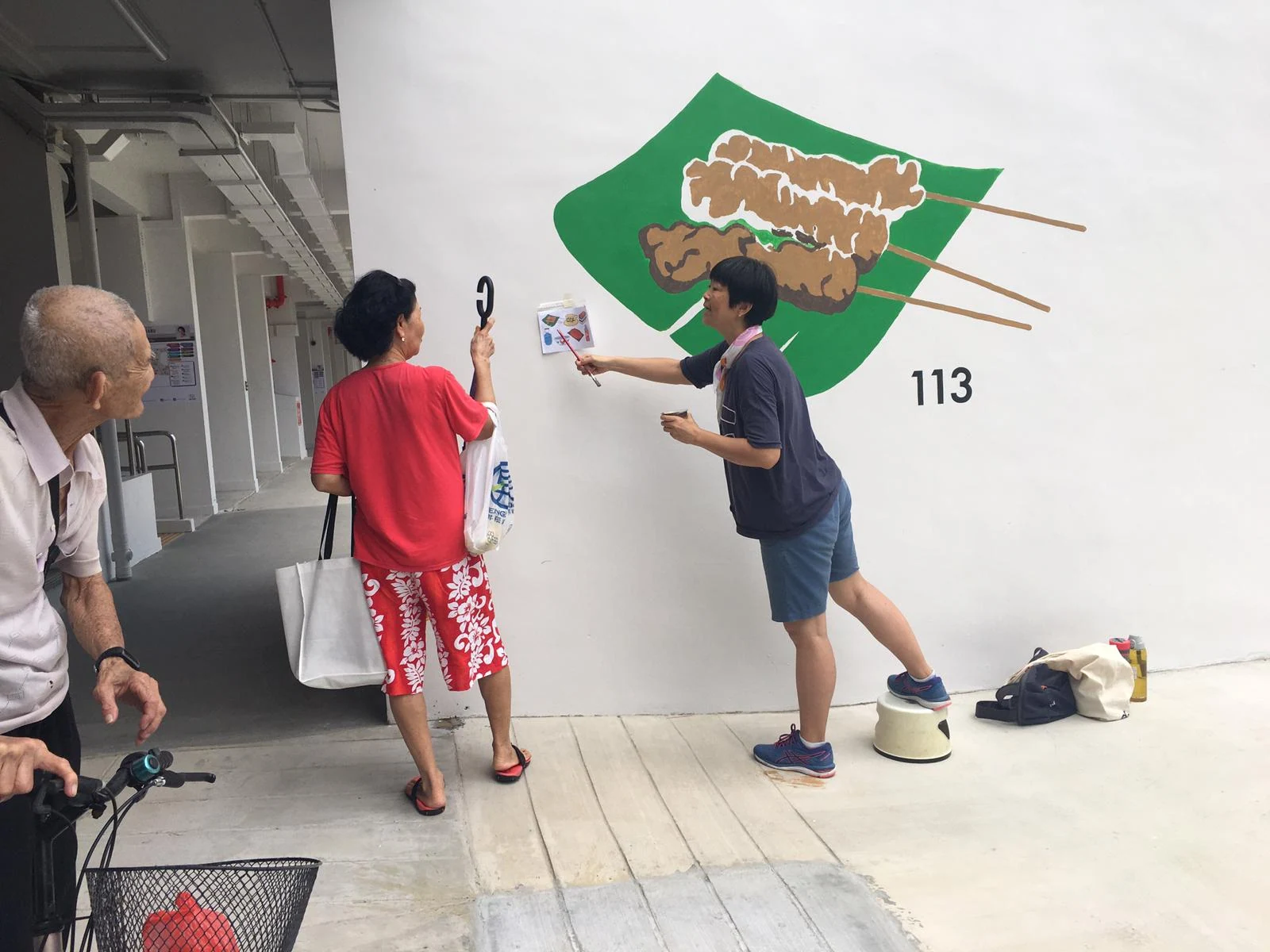
“That was how we came up with the idea of very simplified icons that are very prominent in their generation,” explains Mary-Ann Khoo, of Dementia Singapore.
The Kebun Baru murals are part of a growing movement to make communities more physically accessible for people with dementia. More than 55 million people worldwide are currently living with forms of dementia, and that number is expected to climb to 139 million by 2050. Yet many people face hurdles in getting around their communities, leading to reliance on caregivers, or even being homebound.
Now, cities like Singapore are making physical changes to help people with dementia stay engaged in their communities, like adding innovative signage, public seating areas and distinctive landmarks.
“What we’re trying to do is really to make our environment or our spaces a lot more dementia-enabling, so that people with dementia can still live a normal life,” says Khoo.
When people think of dementia, their minds often jump to the later stages of the disease, when someone may need intensive care. In fact, people with dementia, especially in earlier stages, continue to work, socialize and lead independent lives for years.
That misconception leads to what British Columbia resident Jim Mann, an advocate and researcher on issues related to dementia, describes as an “assumption of incapability.” Mann, who was diagnosed with Alzheimer’s disease in 2007, recalls people looking at him either with impatience, or with a sense that he shouldn’t be out alone without a caregiver.
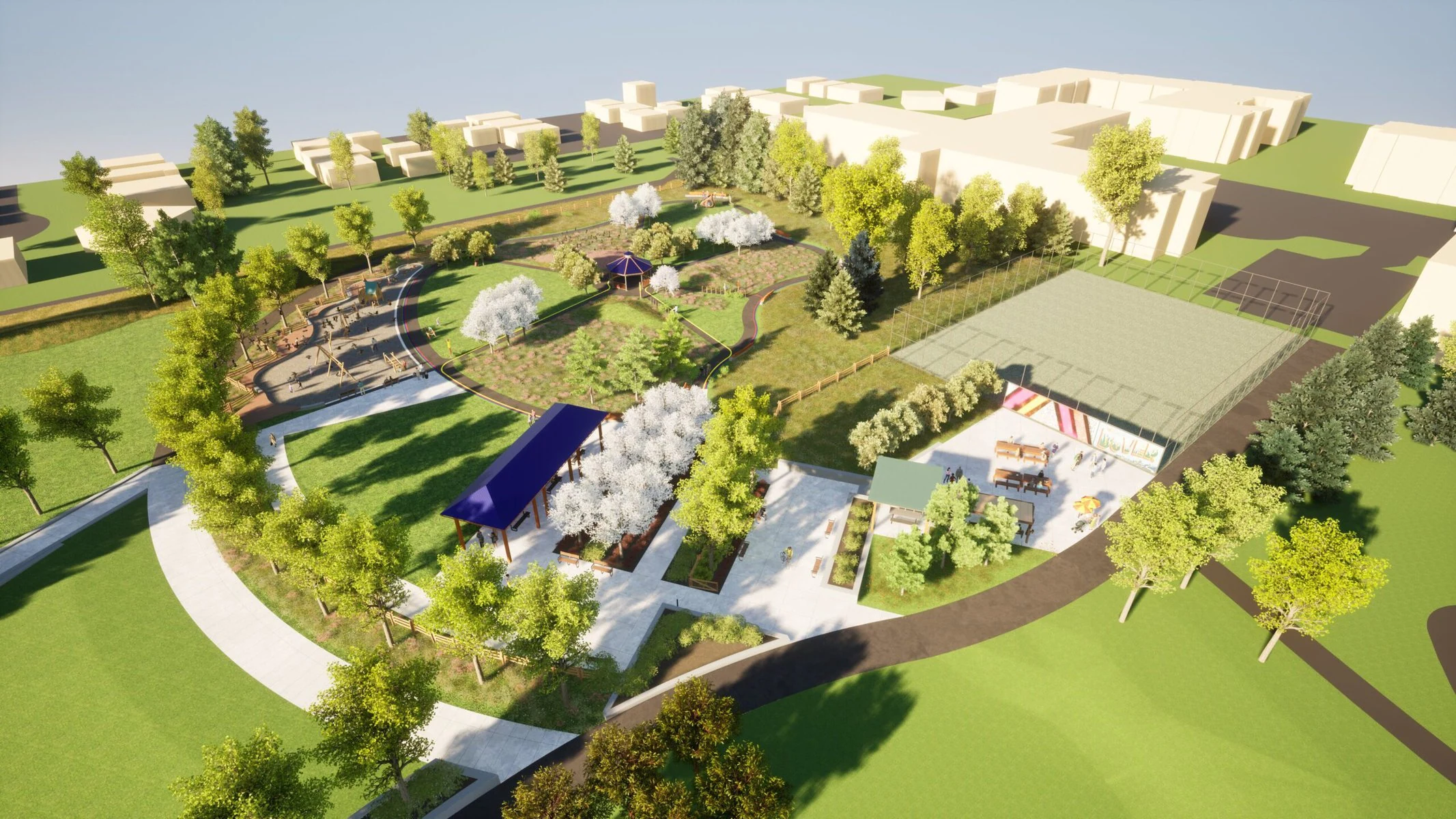
Aspects of dementia also present unique challenges. The diseases can impact spatial cognition, the brain functions that contribute to our internal maps of physical areas. Because of this, many people with dementia get disoriented. Mann remembers coming out of a meeting one day in downtown Vancouver, an area he’s very familiar with, and abruptly not knowing where he was or what he was doing. After a few minutes, he was able to get his bearings. But fear of incidents like that can keep people with dementia from going out into their communities.
“You lump that stigma, that stereotype, in with the disorientation, and on diagnosis, you lose self-confidence,” says Mann. “All of that together equals, ‘I’m not going anywhere.’”
Weighed down by negative news?
Our smart, bright, weekly newsletter is the uplift you’ve been looking for.Mann has been working alongside organizations including the Alzheimer Society of British Columbia to encourage communities to become more accessible for people with dementia. Part of that effort is social, such as trainings on how to recognize and interact with people with dementia. Another aspect is identifying physical changes that make it easier for people with dementia to lead complete, independent lives.
“These are individuals who do still want to go out and grab coffee with a friend, who need to access an appointment via public transportation, who go to their local library, take part in yoga classes,” says Heather Cowie, of Alzheimer Society of B.C., who heads the nationwide Dementia Friendly Canada program. “We want to make sure that they’re able to live life to the fullest.”
In many North American residential neighborhoods, streets all look alike, lined by similar detached houses. That can make it tricky for people with dementia to navigate, explains Habib Chaudhury, a professor of gerontology at Simon Fraser University, who has been leading a project developing guidelines for creating dementia-inclusive environments.
That’s where high-level urban planning choices help: Multi-use areas, where shops and businesses are interspersed with residences, provide more distinctive features, he explains.
Clear signage can also help people find their way, but Chaudhury notes that dementia impairs reading ability, so it’s important to use other visual cues, like symbols. In his research, Chaudhury has found that landmarks are very important for people with dementia — not necessarily large features, like a clocktower, but instead smaller points. He recalls going on walking tours with people with dementia as they showed him their own navigational markers, like an unusual mailbox.
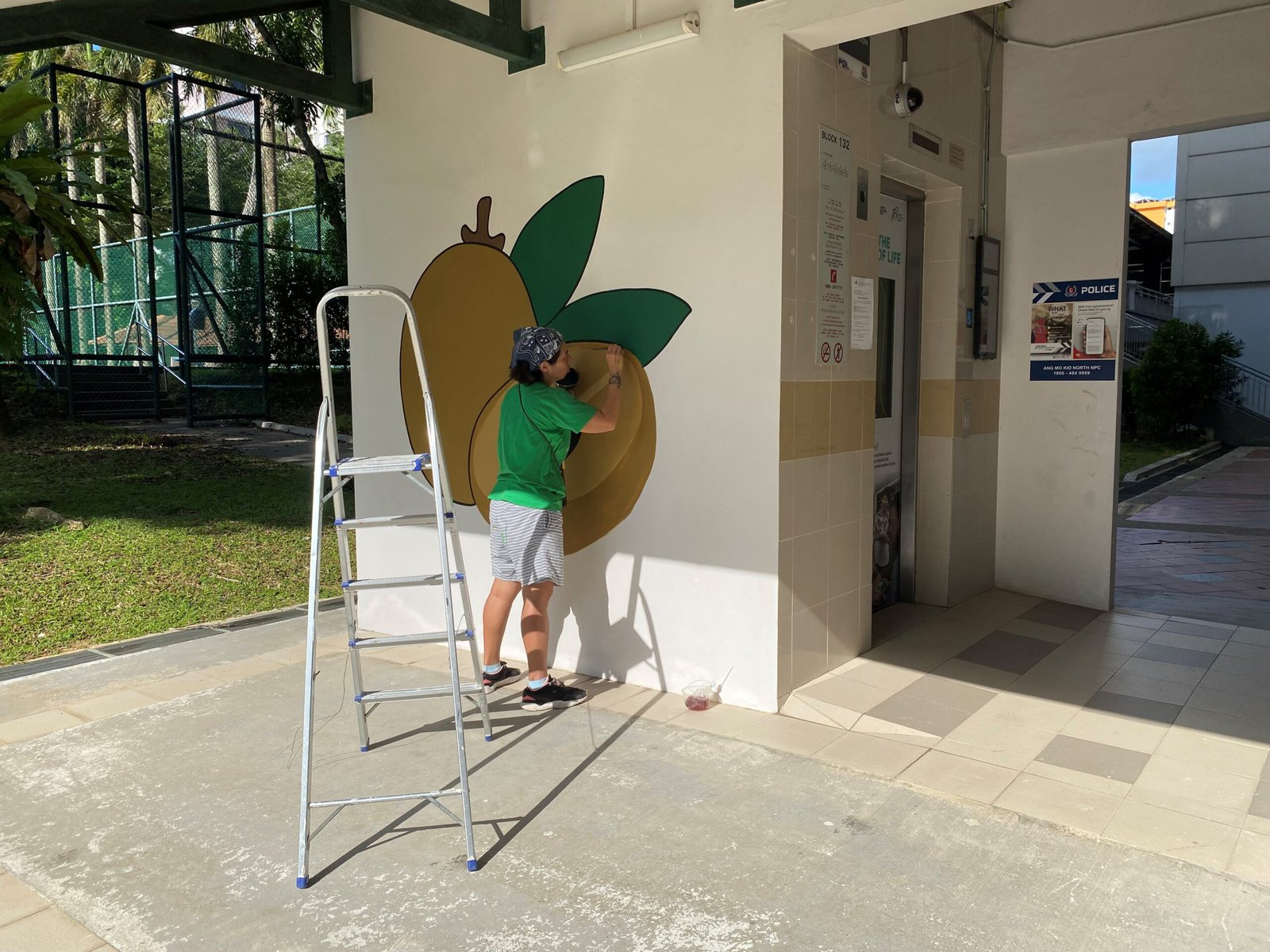
“It really points out the importance of what we can do, from a planning and design perspective, in an intentional way,” Chaudhury says.
He sees the murals in Singapore as a model that can help make a city neighborhood more legible. The designs were conceived with input from people with dementia, with suggestions to make them simple and recognizable, without too many colors.
Feedback from the neighborhood shows the impact. In a survey of residents of the Kebun Baru housing blocks, 60 percent responded that the murals help people with dementia to navigate. And there’s an added benefit: 38 percent said that the artwork helped raise awareness about dementia.
Dementia Singapore also designed a system to help people with dementia find their way through some of the city’s busy bus stations, where dozens of buses depart from a single hub. Again, designed with input from residents with dementia, the signage emphasizes simplicity. “Where there’s too much information, it is no information,” Khoo explains.
In 2021, the organization started installing a color-coded system in transit hubs, using arrows and lines on the floor to lead people to their transfers. Khoo notes that they needed to be clear that the signs direct people within the bus station, not to points of interest outside. While there has been some feedback questioning why this system is needed, Dementia Singapore has also heard from people with dementia, and others with different disabilities, that it has made it easier to navigate.
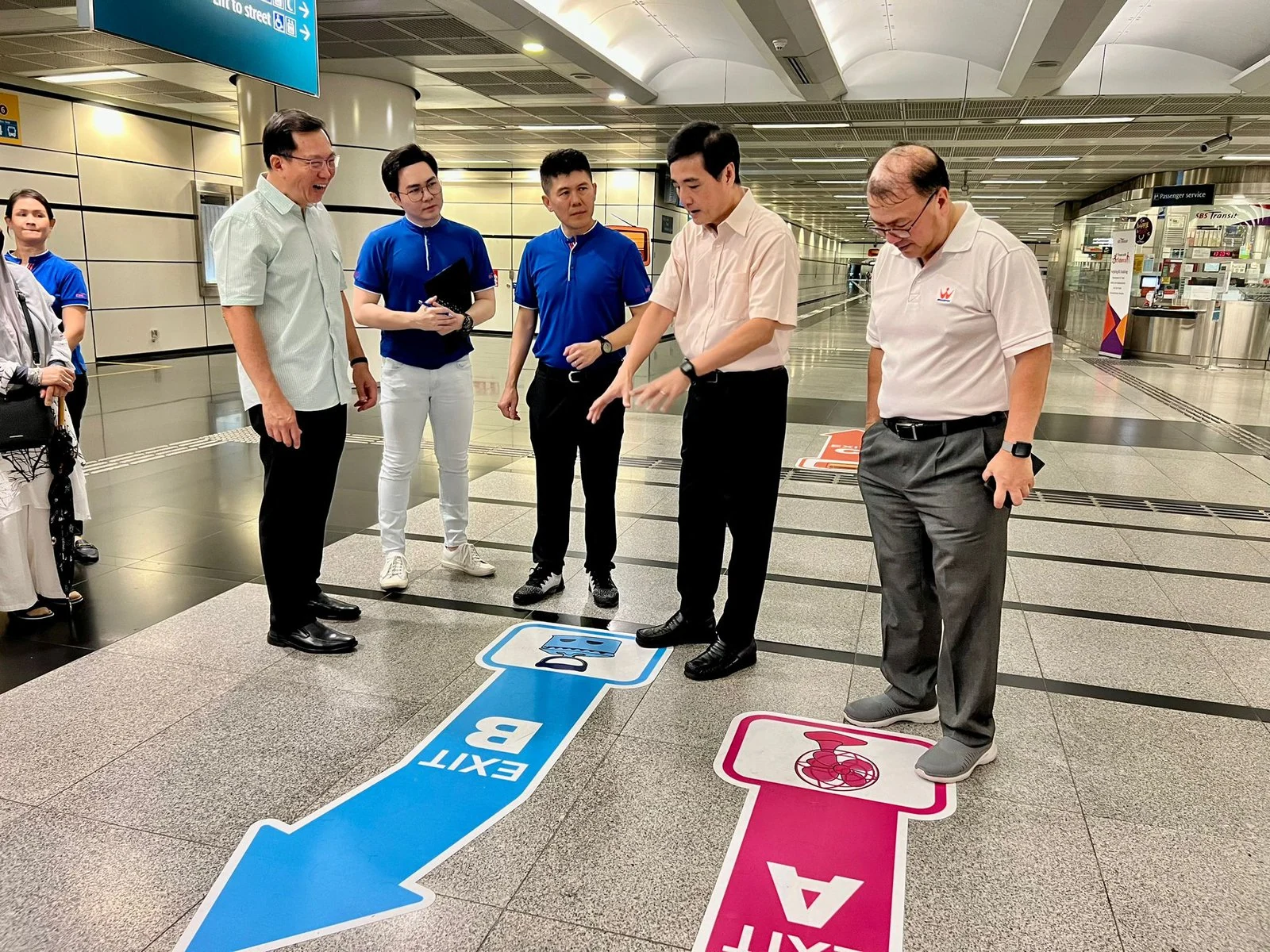
Meanwhile, other features also make neighborhoods more hospitable, such as places to rest. When someone becomes disoriented on a busy street, anxiety spikes, Chaudhury explains. Building benches and quiet spaces into cities makes it easier for people to find a place to retreat to get their bearings.
Many of these insights contributed to the blueprint of a new park set to open in Calgary, in western Canada, in 2026. Spearheaded by the nonprofit Parks Foundation Calgary, the dementia-inclusive design includes basic accessibility principles like wide, level walkways and handrails, as well as more specific features, from color-coded signage and wayfinding marks on the ground, to quiet spaces with stimulating features, like sculptures with moving elements. Sheila Taylor, CEO of the Parks Foundation, explains that the project aims to welcome all Calgary residents — the plans include a playground for kids — while being tailored to dementia.
“For so long, we’ve thought about designing spaces for kids,” says Taylor, noting that there are more than 1,100 playgrounds in the city. “I think we need to think about public spaces for everyone, people of different ages, different abilities.”
One of the challenges of dementia-friendly design is that what works for one person may not work for another. For Jim Mann, he might remember a landmark, like a distinctive historic building, but it won’t necessarily help him know where he is. “That just shows the individual experiences of dementia,” says Mann.
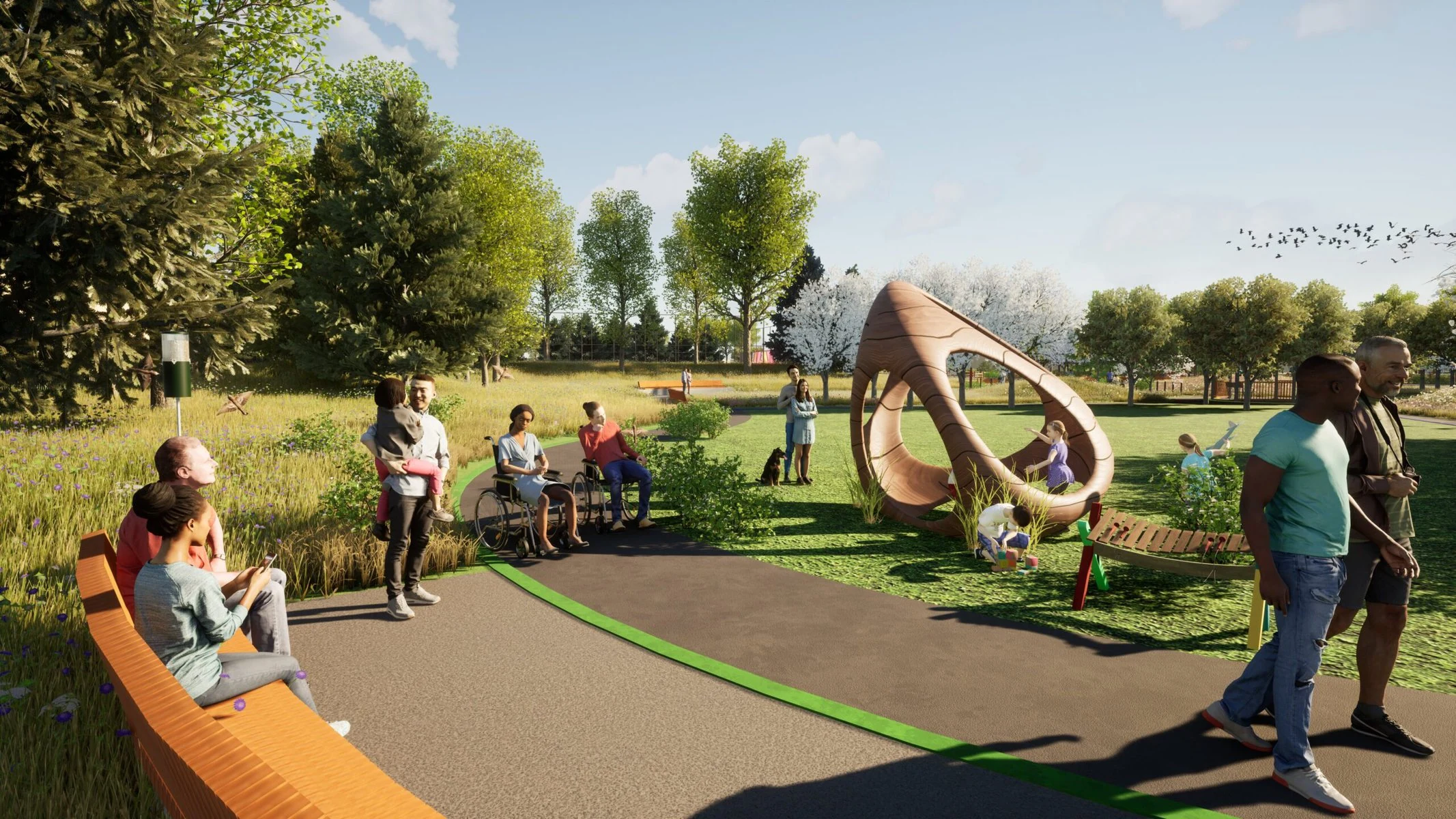
To truly make a community more accessible for people with dementia, he says, requires ongoing social efforts, beyond just fixing a sidewalk or adding benches to an area.
“There needs to be that communication, that, ‘Why are we doing it?’” says Mann.
As Mann has spoken about dementia around Canada over the last two decades, he has encountered people in city governments who seemed skeptical about how dementia related to their jobs. Yet, through conversations, he’s seen municipal planners become more receptive.
In Singapore, Khoo says the murals and bus signage are helping now, but they’re also opening discussions about incorporating the needs of people living with dementia into planning at a higher level.
“These projects or initiatives that we have started are just a very stop-gap measure,” says Khoo. “It cannot be an afterthought. It has to be done at the planning stage.”





